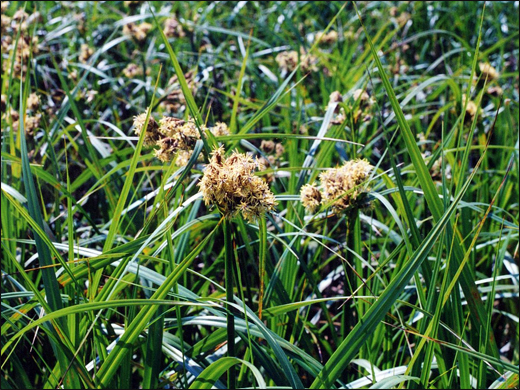Water chestnut/ Kaseru/ Scirpus kysoor Roxb./ Scirpus grossus Linn. – Ayurvedic Properties, Uses & Health Benefits

Abstract
Scirpus kysoor Roxb., commonly known as Kasheru, is a perennial herbaceous plant belonging to the Cyperaceae family. Traditionally utilised in Ayurveda and other indigenous medicinal systems, it is renowned for its therapeutic properties, including analgesic, antipyretic, antioxidant and antimicrobial effects. The plant’s rhizomes are particularly valued for their medicinal and nutritional benefits.
Introduction
Scirpus kysoor, also referred to as Actinoscirpus grossus var. kysoor, is a wetland plant prevalent in the Indian subcontinent. In Ayurvedic medicine, it is esteemed for its cooling, diuretic, and digestive properties. The plant’s rhizomes are traditionally used to treat various ailments, including gastrointestinal disorders and urinary tract issues.
Scientific Classification
- Kingdom: Plantae
- Phylum: Streptophyta
- Class: Equisetopsida
- Order: Poales
- Family: Cyperaceae
- Genus: Actinoscirpus, Scirpus
- Species: grossus, kysoor
Synonyms
- Kaseru, Kaseruka – Grows well in water-abundant areas; the term “Kasheyath” derives from “Kash”, meaning to grow in marshy land; resembles Scirpus kysoor.
- Sugandhi, Gandhakanda – The underground tuber emits a pleasant fragrance.
- Shukareshta – The plant is favoured by pigs.
- Gudakanda, Gundakanda, Jaluka, Shudramusta, Swalpakanda – These names reflect their regional and morphological variations.
- Chichotaka, Kshudra Musta – Known for its resemblance to small-sized Musta species.
Vernacular Names
- Hindi name – Kaseru
- English name – Club-rush, Bulrush, Deer Grass, Grass Weed
- Assamese name – Kaheru
- Bengali name – Keshura, Kashura
- Gujarati name – Kasela, Gundaro
- Kannada name – Kasura Gadde
- Malayalam name – Kazhi Muttanga
- Marathi name – Kachera, Kasara
- Oriya name – Kaseru Kawdu
- Tamil name – Gundtiga Gaddi
- Telugu name – Gundatunga Gatti
- Urdu and Punjabi name – Kaseru
Habitat
It grows in marshy areas and along the edges of ponds, commonly found in India and China. Scirpus kysoor thrives in marshy areas, pond margins and swampy regions across India, particularly in the Himalayan foothills and northeastern states.
Morphology
This medium-sized plant typically grows near water bodies and reaches a height of about 3 to 6 feet. Its stem is triangular in shape, and it bears grass-like leaves measuring around 2–3 inches in length and about 1 inch in width. The plant produces clusters of small, often brown spikelets, and its fruits are small and brownish in colour. The rhizomes are blackish on the outside with fine hair-like structures, while the inside is white, sweet in taste and emits a pleasant fragrance. Flowering and fruiting occur between September and October. It is commonly found across India in wet areas such as near rivers, lakes and marshy lands.
Varieties
There are two varieties whose rhizomes are similar to Kaseru, and these are as follows:
- Scirpus articulatus Linn.
- Cyperus esculentus Linn.
Classical Categorisation
- According to Bhavaprakash Nighantu – Classified under Shaka Varga
- According to Kaiyadeva Nighantu – Listed in Oushadhi Varga
- According to Raj Nighantu – Included in Shalmalyadi Varga
Ancient Verses
कसेरुकद्वयं शीतं मधुरं तुवरं गुरु ।
पित्तशोणितदाहघ्नं नयनामयनाशनम् ।
ग्राहि शुक्रानिलश्लेष्मारुचिस्तन्यकरं स्मृतम् ॥
(Bhavprakash Nighantu Shaka varga 113)
According to the above shloka, Kaseru has cold potency, sweet and astringent taste, heavy in nature and absorbent properties. It is aphrodisiac and helps in the management of anorexia, excess Kapha and Vata dosha and enhances milk production. It is effective in the management of Pitta dosha, burning sensation, bleeding disorders and eye diseases.
Ayurvedic Properties
- Taste (Rasa) – Sweet (Madhur), Astringent (Kashaya)
- Physical property (Guna) – Heavy (Guru)
- Potency (Veerya ) – Cold Potency (Sheet)
- Post-digestion effect (Vipaka) – Sweet (Madhur)
- Effect on tridosha – Balance Pitta dosha
Therapeutic Properties
- Useful in the treatment of Amlapitta (acid dyspepsia)
- Helps relieve anorexia (loss of appetite)
- Beneficial in vomiting and burning sensations
- Alleviates delusion and intoxication
- Reduces excessive thirst
- Helps with fatigue without physical exertion
- Has cold potency (Sheeta Veerya)
- Soothes the dryness of the throat
- Heavy (Guru) and wholesome in conditions like Vatarakta (gout)
- Supports the healing of chest injuries
Systemic Actions
Externally
Beneficial for the eyes; when combined with Yashtimadhu, its paste is applied in eye disorders. It soothes burning sensations and is also used topically for inflammatory wounds and boils accompanied by heat and irritation.
Internally
- Digestive system – Helpful in managing excessive thirst, vomiting, diarrhoea and dysentery. It has absorbent properties but may cause abdominal distension. Flowers are particularly recommended in jaundice.
- Circulatory system – Acts as a styptic and supports heart health.
- Reproductive system – Works as an aphrodisiac, aids in sustaining pregnancy, enhances lactation and is useful in conditions like oligospermia.
- Excretory system – Promotes urination and is useful in treating dysuria.
- Tapakrama (Fever Management) – Reduces burning sensations and is effective in pittaja-type fevers marked by thirst and heat.
- Satmikarana (Rejuvenation) – Beneficial in cases of general weakness and debility.
Chemical Composition
- Progesterone (from the tuber)
- Sugars (from the tuber)
- Tannins (from the tuber)
- Starch (from the tuber)
- Saponins (from the tuber)
- Amylase (from the fruit)
Modern Overview
Antimicrobial Activities
The antimicrobial properties of different extracts from unripened and ripened Anthocephalus cadamba fruits and the tuber of Scirpus kysoor Roxb. were tested against five foodborne pathogens. The evaluation was carried out using agar well diffusion and microdilution methods. Quantitative analysis was performed based on the minimum inhibitory concentration (MIC), minimum bactericidal concentration (MBC), and the MIC to MBC ratio.
Practical Uses
- For eye conditions such as conjunctivitis accompanied by a burning sensation, a cold infusion made from the rhizome of Kasheruka is used as eye drops.
- During summer, for burning sensations across the body due to fever, excessive thirst, or skin eruptions, a cold infusion of Scirpus grossus rhizome is administered in doses of 40–50 ml.
- In skin conditions like herpes, wounds, and boils, the rhizome powder is mixed with ghee and applied topically.
- For nausea and diarrhoea, 5–10 g of Scirpus grossus rhizome powder is taken with hot water.
- In acute diarrhoea, the rhizome powder is mixed with rose water and consumed.
- To enhance sperm count, 3–5 g of Scirpus grossus rhizome powder is taken along with milk.
- To strengthen the cardiac muscles, a cold infusion of Kasheruka rhizome is combined with Arjuna bark powder (Terminalia arjuna) and consumed.
- In jaundice treatment, the flowers of Scirpus grossus are ground into a paste and used medicinally.
- For improving lactation, a cold infusion of the rhizome is taken in a 40–50 ml dose.
- In cases of burning urination and reduced urine output, 30–40 ml of cold infusion from the Scirpus grossus rhizome is administered.
Part Used
Rhizome
Dosage
- Powder – 5–10 gm
- Paste (Lepa) – 5–10 gm
- Decoction – 10–20 ml
Ayurvedic Medicines
- Kservyadi Peya
- Kservyadi Lepa
- Gandha Taila
- Vastyamayantaka Ghrita
- Veeratharadi Gana Kashaya Churna
Conclusion
Scirpus kysoor Roxb. is a perennial sedge valued for its ecological and medicinal significance. It thrives in moist environments and plays a crucial role in preventing soil erosion. Traditionally, it has been used in herbal medicine for its diuretic and cooling properties. Its fibrous roots are also utilised in making mats and other handicrafts. Ongoing research may further uncover its phytochemical and pharmacological potential. Overall, Scirpus kysoor Roxb. holds promise for both environmental and therapeutic applications.



